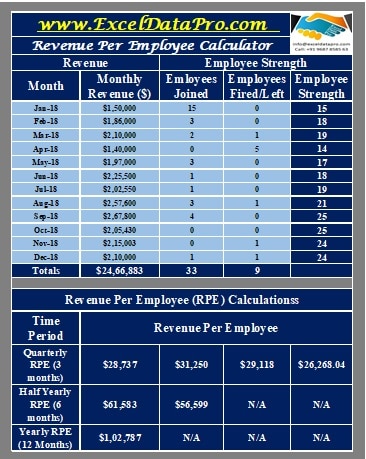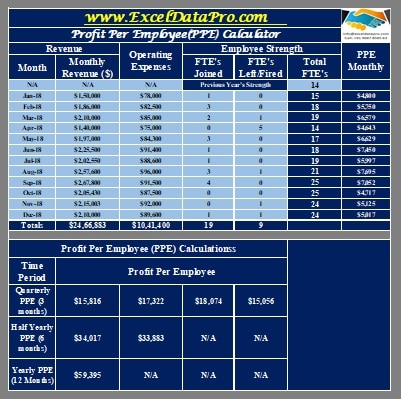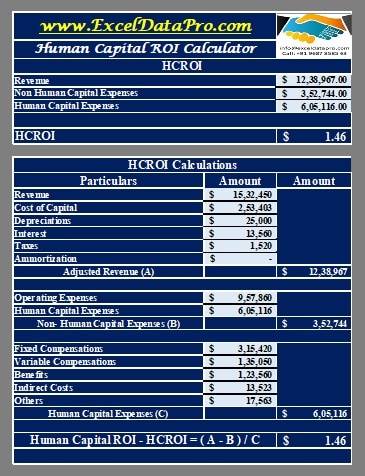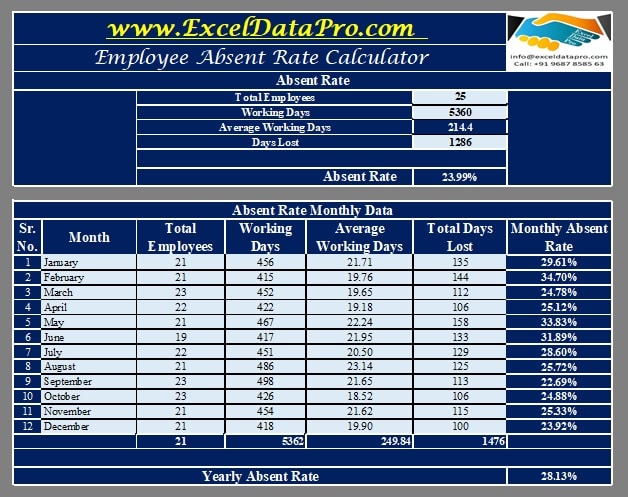
Table of Contents
Productivity Metrics – Definition
They help to identify potential problems by collecting relevant data from the process. They also help to take effective steps to correct and control any abnormality in the company’s processes.
Furthermore, proper evaluation of these metrics helps to prevent revenue losses to the company as well as the client/customers. These metrics provide insights into the effectiveness and efficiency of processes.
Precise quantified analysis of employee’s productivity, production or services defines the importance of productivity metrics. Higher results of these measures are indicators of the growth and development of any organization.
4 Productivity Metrics
There are 4 major metrics under productivity: Revenue Per Employee (FTE), Profit Per Employee (FTE), Human Capital Return on Investment (HCROI), and Absenteeism Rate. Here FTE stands for Full-Time Equivalent.
Revenue Per Employee (FTE)
Revenue per employee, also known as sales per employee is an operating performance ratio. It is used to measure the average revenue obtained against each employee.
Mostly, labor-intensive industries use these metrics. It means those industries where the value of human capital is more than their physical capital. In other words, a measure to know how efficiently a company uses its workforce.
Click on the link to understand Revenue Per Employee in detail with formula & examples. Additionally, you can also download a ready-to-use Revenue Per Employee Calculator in excel.

Profit Per Employee
Profit Per Employee, an HR Metric and also an accounting ratio that you can use to measure the efficiency of employees and the performance of the company over a period of time. This metric emphasis on the return on talent.
It is an output-based measure that helps the management to focus on increasing profit relative to their workforce.
Understand Profit Per FTE in detail with formula & examples along with a ready-to-use Profit Per FTE Calculator in excel.

Human Capital Return On Investment (HCROI)
Human Capital ROI or HCROI, a metric that evaluates the monetary value the workforce adds against the money spent on their compensation. These compensations include salaries, extra monetary benefits, etc spent on FTEs and contingent(temporary or part-time) employees of any organization.
Human Capital ROI evaluates how much financial contribution made by employees individually or collectively. Therefore, it gives us a true measure of the productivity of our human resources.
Click on the link to understand Human Capital Return on Investment in detail with formula & examples. Additionally, you can also download a ready-to-use Human Capital ROI Calculator in excel.

Absenteeism Rate ( Absent Rate)
Absent Rate means the percentage of the workforce that is absent during a particular period against the total strength.
A higher absent rate indicates a disengaged workforce and also considered as a major factor in higher employee turnover.
Understand Absenteeism in detail with formula & examples along with a ready-to-use Absent Rate Calculator in excel.

We thank our readers for liking, sharing and following us on different social media platforms.
If you have any queries please share in the comment section below. We will be more than happy to assist you.